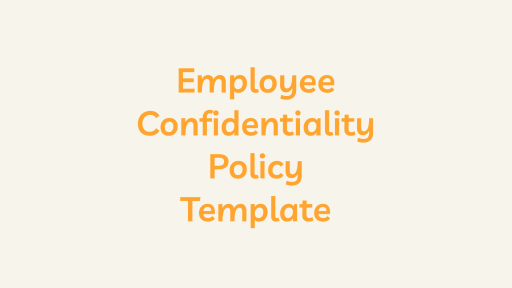What does the Company Data Protection Policy Template consist of?
The Company Data Protection Policy Template includes an introduction outlining the purpose, definitions of sensitive data, rules for data handling, employee responsibilities, data storage and access procedures, data breach response protocols, and compliance with data protection laws. The template establishes guidelines for safeguarding sensitive information and promoting data security and privacy within the organization.
Template
[Company/Organization Name]
Effective Date: [Date]
Company data protection policy
1. Purpose:
The purpose of this Data Protection Policy is to outline the guidelines and procedures for the protection, handling, and processing of data within [Company/Organization Name] in compliance with applicable data protection laws, including the California Consumer Privacy Act (CCPA) and the General Data Protection Regulation (GDPR) for any data subject residing in the European Union.
2. Scope:
This policy applies to all employees, contractors, and third-party service providers who have access to or process personal data on behalf of [Company/Organization Name] during the course of their work.
3. Data Classification:
a. Personal Data: Personal data refers to any information that can identify an individual, directly or indirectly. This includes, but is not limited to, names, addresses, contact details, Social Security numbers, financial information, and any other personally identifiable information.
b. Sensitive Data: Sensitive data includes information that requires special protection due to its confidential, private, or sensitive nature. This includes, but is not limited to, health records, biometric data, racial or ethnic origin, religious beliefs, genetic data, and any other data protected by applicable laws.
4. Data Protection Principles:
a. Lawfulness, Fairness, and Transparency: Data processing activities must be conducted in accordance with applicable data protection laws and regulations. Data subjects must be informed of the purpose and legal basis for processing their data.
b. Purpose Limitation: Personal data should only be collected and processed for specified, explicit, and legitimate purposes. Data should not be further processed in a manner incompatible with the original purpose.
c. Data Minimization: Only the minimum amount of personal data necessary to fulfill the intended purpose should be collected and processed. Unnecessary data should not be retained.
d. Accuracy: Reasonable steps should be taken to ensure the accuracy and currency of personal data. Inaccurate or outdated data should be promptly corrected or erased.
e. Storage Limitation: Personal data should be retained only for as long as necessary to fulfill the purpose for which it was collected or as required by law. Data no longer needed should be securely deleted or anonymized.
f. Integrity and Confidentiality: Appropriate technical and organizational measures should be implemented to protect personal data against unauthorized access, disclosure, alteration, or destruction. Access to personal data should be limited to authorized personnel on a need-to-know basis.
5. Data Security:
a. Access Control: Access to personal data should be restricted based on the principle of least privilege. Access rights should be granted to authorized personnel and regularly reviewed to ensure appropriate access levels.
b. Confidentiality: Employees must maintain the confidentiality of personal data they have access to during the course of their work. Personal data should not be disclosed to unauthorized individuals or used for unauthorized purposes.
c. Data Encryption: Personal data should be encrypted during transmission and storage, where appropriate, to protect against unauthorized access.
d. Incident Response: Any actual or suspected data breaches or security incidents involving personal data should be reported immediately to the Data Protection Officer or designated contact person. Incident response procedures should be followed promptly to mitigate the impact and prevent further unauthorized access.
6. Data Subject Rights:
a. Data subjects have certain rights regarding their personal data, including the right to access, rectify, erase, and restrict the processing of their data, as provided by applicable data protection laws. Requests for exercising these rights should be addressed to the Data Protection Officer or designated contact person.
b. Employees should cooperate with data subjects and assist the Data Protection Officer in responding to data subject requests within the legally required timeframes.
7. Data Transfer:
Personal data should only be transferred to third parties or outside of the organization in compliance with applicable data protection laws and regulations. Data transfer agreements or appropriate safeguards should be implemented to protect personal data during such transfers.
8. Employee Responsibilities:
a. Employees are responsible for complying with this Data Protection Policy and any related policies, procedures, or guidelines.
b. Employees should undergo data protection and security training to ensure they understand their responsibilities and the best practices for handling personal data.
c. Any concerns, incidents, or breaches related to personal data protection should be reported promptly to the Data Protection Officer or designated contact person.
9. Compliance and Review:
a. Compliance with this Data Protection Policy will be monitored and periodically reviewed to ensure its effectiveness and alignment with applicable laws and regulations.
b. Updates and changes to this policy may be made as necessary to address changes in the business environment, technology, or legal requirements.
Employee:
I have read and understood the Company data protection policy, and I do not have any questions.
[Employee’s Full Name]
[Employee’s Signature]
[Date]
Company:
[Company Name]
[Company Representative’s Name]
[Company Representative’s Title]
[Company Representative’s Signature]
[Date]





